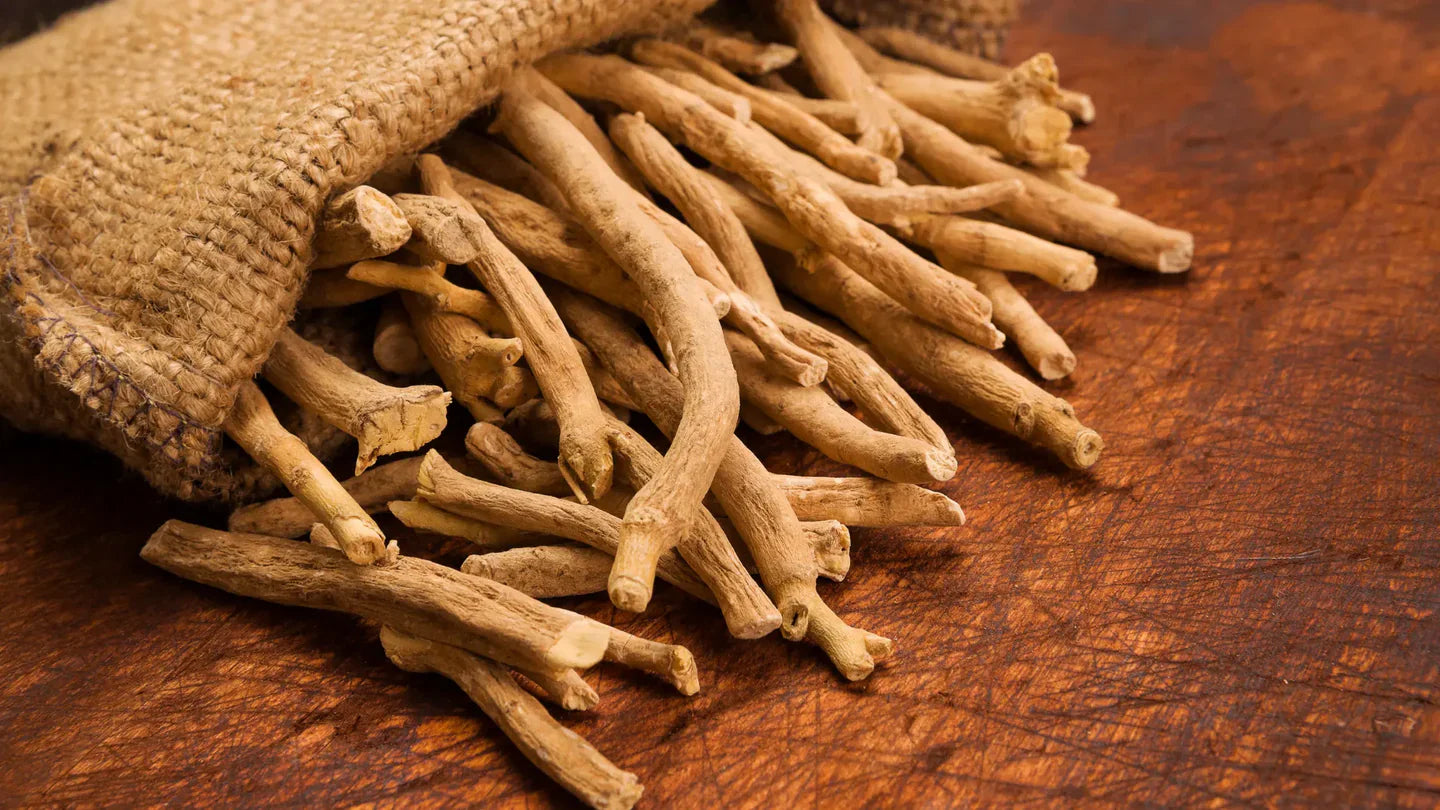The Blue Zones Diet | Secrets from the World's Longest-Living People

Written by Valeria Briancesco & Reviewed by Paul Holmes.
What if the secret to a long, healthy life wasn't hidden in a lab or locked behind high-tech supplements—but growing quietly in gardens, bubbling in fermented teas, and shared over humble meals with your loved ones? That’s the essence of the Blue Zones Diet, shaped by the world's longest-living communities.
In this article, we’ll unpack what they eat, how they live, and how you can adopt these timeless habits, with a little help from modern nutrition support.
What Is The Blue Zones Diet?
Coined by researcher Dan Buettner, "Blue Zones" are five regions with unusually high numbers of centenarians who live free from chronic disease well into old age.
These include Ikaria (Greece), Okinawa (Japan), Nicoya (Costa Rica), Sardinia (Italy), and Loma Linda (California, USA).
Despite their cultural differences, their diets share some key themes: plant-focused meals, whole ingredients, and minimal processed food. These communities naturally follow what researchers now call a longevity diet, rich in fibre, antioxidants, and nutrients that support overall resilience.
“We found that people in the Blue Zones don’t diet in the way we think of diets today. They simply eat what they’ve always eaten—and they live longer because of it.”
— Dan Buettner, National Geographic fellow and author of The Blue Zones
What Is Longevity and Why Does It Matter?
Longevity is not just about living longer—it’s about living better for longer.
Known as healthspan, this concept is central to Blue Zone lifestyles. These populations age well by combining movement, purpose, and balanced nutrition.
Many causes of ageing like chronic inflammation, oxidative stress, and mitochondrial dysfunction can be reduced by lifestyle choices7.
This is where modern science and ancestral wisdom align. While we can’t all live in coastal villages, we can adopt many of the same principles to increase our chances of healthy ageing.

The Longevity Guide: Everything You Need to Know About Longevity


This is our complete beginner's guide to Longevity. We explain what it is, what studies are available, where it comes from, what it is used for, and a few other facts you may not know.
Regional Blue Zone Diets Explained
The Ikaria Diet (Greece)
Loaded with legumes, vegetables, and olive oil. Herbal teas and moderate wine consumption are key features. Fasting and napping are also cultural norms[11]
The Okinawa Diet (Japan)
Sweet potatoes, tofu, seaweed, and turmeric are staples. Okinawans eat until they’re 80% full—a principle known as hara hachi bu. Their diet may help promote autophagy, a cellular self-cleaning process[3].
The Nicoya Peninsula Diet (Costa Rica)
The “three sisters” of corn, beans, and squash dominate, alongside tropical fruits. Their meals are high in antioxidants and fibre[6].
Sardinia (Italy)
Sardinians consume sourdough bread, goat cheese from grass-fed animals, fava beans, and seasonal vegetables. Their meals are simple yet nutrient-dense, and they enjoy red wine in moderation. The traditional Mediterranean lifestyle includes plenty of walking across hilly terrain and strong intergenerational family bonds[5].
Loma Linda (California, U.S.A.)
The Seventh-day Adventist community in Loma Linda follows a mostly plant-based diet rich in legumes, whole grains, nuts, and fresh produce. They abstain from alcohol and caffeine, and observe a 24-hour Sabbath for rest and spiritual reflection. Daily walking, community involvement, and service are deeply woven into their lifestyle.

Although Buettner’s book discusses only five recognised regions—Okinawa (Japan), Sardinia (Italy), Nicoya (Costa Rica), Ikaria (Greece), and Loma Linda (California, USA)—it’s possible that other, as-yet-unidentified regions in the world also qualify as Blue Zones. These places may not have been studied or publicised to the same extent but could exhibit similar characteristics: high longevity, strong community ties, low rates of chronic disease, and plant-forward diets.
Numerous studies have confirmed that the original Blue Zones are home to disproportionately high numbers of nonagenarians and centenarians—individuals who live to at least 90 and 100 years of age, respectively.
In fact, people in these regions often live longer than the global average while remaining remarkably healthy and active into their later years1,2,3
Surprisingly, research suggests that genetics account for only about 20% to 30% of a person’s lifespan. This means the remaining 70% to 80% is shaped by modifiable environmental and lifestyle factors, such as nutrition, physical activity, social engagement, stress management, and sense of purpose4,5,6.
These findings underscores the powerful impact of daily habits and surroundings on human longevity—an insight that holds relevance far beyond the Blue Zones themselves.
What Do the Blue Zones Have in Common?
| Common Habit | Blue Zones Practice |
|---|---|
| Diet | Mostly plant-based, whole foods, low meat |
| Movement | Daily, natural movement (walking, gardening) |
| Stress Reduction | Built-in rest (naps, prayer, rituals) |
| Purpose | Clear life direction (“ikigai” / “plan de vida”) |
| Social Connection | Strong family and community bonds |
| Alcohol (Optional) | Red wine in moderation, with meals |
| Eating Patterns | Small meals, often early dinner; some practice fasting |
The 9 Key Food Habits of the World’s Longest-Living People
1. Plant-Based Staples
Vegetables, wild greens, and sweet potatoes form the heart of every meal. These are rich in polyphenols and fibre, delivering potential natural anti-inflammatory effects[8].
2. Whole Grains and Legumes
Beans, lentils, chickpeas, and peas offer essential protein and prebiotic fibre. They support a robust gut microbiome, which is now considered essential for healthy ageing[9].
3. Healthy Fats
Olive oil, avocados, and nuts such as walnuts provide monounsaturated fats, potentially supporting cardiovascular and brain health[10].
4. Minimal Animal Products
Meat is eaten sparingly—often only during celebrations. Most protein comes from plants, fermented dairy, and fish.
5. Herbal Teas and Fermented Foods
Chamomile, rosemary, and sage teas are common in Ikaria. Fermented vegetables and sourdough enhance digestion and immune support.

6. Moderate Alcohol
Red wine, particularly in Sardinia and Ikaria, is consumed moderately and socially.
7. Natural Eating Rhythms
Many practice time-restricted eating, finishing meals in the late afternoon and fasting overnight.
8. Low Sugar Intake
Sweets are rare. Sugar is consumed naturally through fruit or honey.
9. Eating with Community
Meals are shared slowly and mindfully, supporting emotional wellbeing. These habits closely reflect today’s recommendations for a plant-based longevity diet.

Vegan Omega-3 As Part Of The Blue Zones Diet
Vegan Omega-3
The future of Omega-3 can be found in the power of algae.
Our Naturecan Vegan Omega-3 is 100% vegan and a sustainable alternative.
Potential Benefits:
- 60 Capsules
- Natural algae-derived oil with life’s®OMEGA
- Easy-to-take softgels
Avoiding all fishy tastes, smells and contains EPA (eicosapentaenoic acid) and DHA (docosahexaenoic acid) – get your high-quality Vegan Omega-3s the easy way with our two-a-day softgels.
Blue Zones Lifestyle Beyond Food
The Blue Zones way of life is about more than what’s on your plate—it’s a way of living that builds resilience from the ground up.
- Move naturally: Not through formal exercise, but through lifestyle. Walking to neighbours’ homes, gardening, using hand tools, and tending animals are just part of daily life. This low-intensity activity keeps joints supple and cardiovascular systems strong.
- Have a purpose: Known as ikigai in Okinawa or plan de vida in Nicoya, this sense of meaning is linked to longer life expectancy. Having a reason to get up in the morning supports mental health and motivation.
- Downshift daily: Each region has rituals to manage stress. In Ikaria, it’s napping. In Loma Linda, it's prayer. These moments reduce cortisol, support emotional regulation, and prevent burnout.
- Belong to a community: Faith-based groups, social clubs, and regular gatherings offer connection. Research shows that people with strong social bonds have better longevity outcomes and lower rates of depression.
- Loved ones first: Families are central. Elderly parents often live with children, and caregiving is normalised. This intergenerational structure gives people a sense of belonging and purpose.
- Eat wisely: People in Blue Zones often follow principles like hara hachi bu—eating until they’re 80% full. Meals are small, especially later in the day, and often consumed with others.
Together, these habits create an environment that naturally lowers stress, supports hormonal and metabolic balance, and builds a foundation for long-term mental and emotional wellbeing.
Can Supplements Help You Replicate the Blue Zones Diet?
While Blue Zones residents rarely use supplements, many benefits can be replicated through modern, science-backed nutrition.
Cellular Health & Energy
- NMN: A precursor to NAD+, this molecule supports energy metabolism and DNA repair.
- NAD+ Boosters: Including NMNH and NR, they help replenish cellular vitality.
- Resveratrol: Found in red wine, linked to longevity genes (sirtuins).
Brain & Cognitive Function
- Fisetin: A plant flavonoid that encourages autophagy and may support brain health.
- Magnesium Glycinate: Supports relaxation, sleep quality, and stress balance.
Inflammation & Metabolism
- Berberine: Naturally regulates blood sugar and supports gut health.
- Quercetin: Offers potential antioxidant and senolytic properties.
- Vegan Omega-3: Supports cardiovascular, brain, and skin health.
“Supplements can’t replace a healthy lifestyle, but they can complement it—especially when our diets are missing key nutrients.” — Dr. Mark Hyman, functional medicine expert
A Blue Zones-Inspired Meal Plan
Planning meals around Blue Zone principles doesn’t need to be complicated. Here’s a practical, accessible template that mirrors their natural, seasonal, and nutrient-rich approach:
| Meal | Example | Benefits |
|---|---|---|
| Breakfast | Oats with chia seeds, berries, walnuts, and flaxseed | High in fibre and omega-3s, supports gut health and long-lasting energy |
| Mid-Morning Snack | Herbal tea (e.g. rosemary or chamomile) with banana | Herbal teas support digestion and calm; banana adds natural sweetness and potassium |
| Lunch | Lentil stew with carrots, spinach, courgette + sourdough bread | Rich in protein, fibre, and antioxidants, balanced plant-based meal |
| Afternoon Snack | Fermented pickles (e.g. kimchi, sauerkraut) with raw almonds | Probiotics support gut flora; almonds provide healthy fats and magnesium |
| Dinner | Quinoa, steamed kale or broccoli, olive oil drizzle, miso soup or fermented side | Light, anti-inflammatory, and easy on digestion, ideal for the evening |
Hydration throughout the day should come from water and unsweetened herbal infusions.
Supplements such as apple cider vinegar gummies may help stimulate natural enzyme production to support digestion and blood sugar balance.
Berberine, a plant compound often compared to metformin, may also enhance metabolic flexibility and insulin sensitivity.
This simple plan offers a template you can adapt daily, combining ancient longevity wisdom with support from modern wellness tools.
Final Thoughts
You don’t need to move to Okinawa or take a vow of minimalism to live a longer, healthier life. The beauty of the Blue Zones approach is its simplicity—and its adaptability.
With small, intentional shifts in how we eat, move, and connect with others, we can begin to craft a lifestyle that supports not just lifespan, but healthspan.
By prioritising plant-based meals, embracing purpose-driven living, and building meaningful relationships, you're laying the same foundations that keeps centenarians thriving well into old age.
And while the Blue Zones don’t rely on supplements, we now have the advantage of combining ancient wisdom with scientific innovation.
At Naturecan, we believe in making healthy ageing accessible to everyone. That’s why we offer a curated selection of supplements designed to complement your journey—whether you're striving to eat more mindfully, reduce inflammation, or support your cells from the inside out.
Start where you are, use what you have, and build habits that nourish both body and mind. That’s the Blue Zones way—and it can be yours too.
FAQS About The Blue Zones Diet
What is the Blue Zones Diet?
A mostly plant-based, whole-food diet followed by the world’s longest-living people.
What foods do Blue Zones populations avoid?
Processed foods, added sugars, and excessive animal products.
Do Blue Zone people take supplements?
Not traditionally—but modern supplements can help replicate some benefits.
What is the Dan Buettner Diet?
A lifestyle-based dietary philosophy inspired by Blue Zone research.
Can supplements support healthy ageing?
Yes—when aligned with natural anti-ageing habits.










